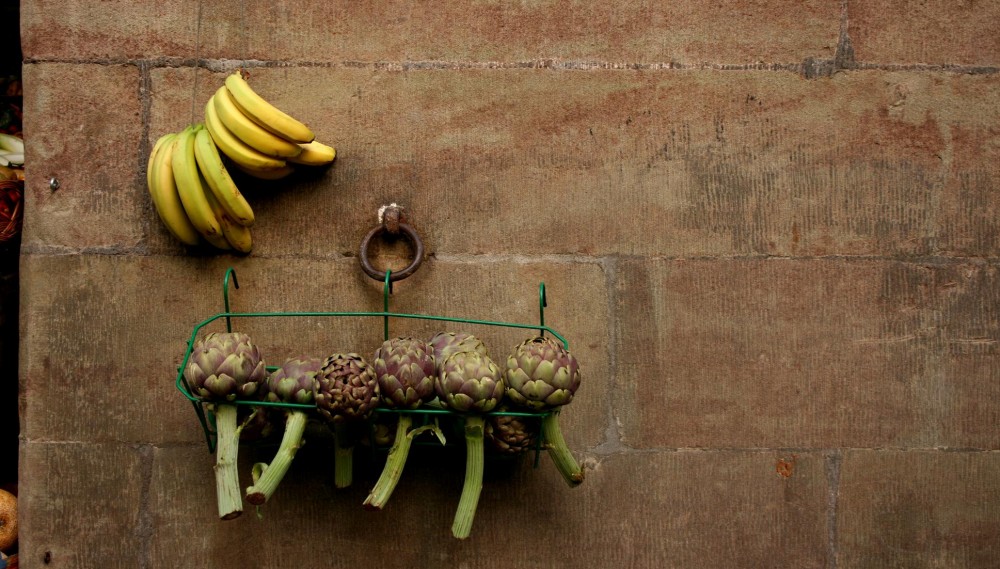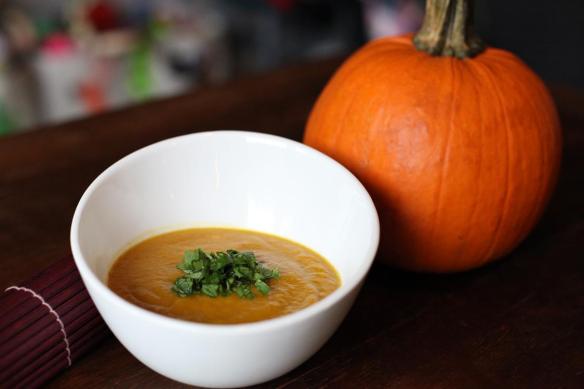On cold, wet days like today there is nothing more soothing than a warm autumn soup.
For someone who lacks culinary imagination, I find soups one of the easiest things to prepare. And creativity can go a long way because for some reason, when you botch a soup, it’s a lot easier to correct than say a soufflé or macarons.
There are a few things I’ve come to learn about making soups:
1. You really don’t need a recipe
I repeatedly hear chefs say that the best meals are those cooked without a recipe. Yet, when I do try to think outside of the box, my meals are sometimes received with a tepid response. I see the little fingers push the plate away from them, the husband staring at his dish trying so hard to avoid eye contact. But when it comes to soup, I rarely fail. And when I feel like I’m about to i.e. my recipe tastes a little bland, or I’ve added too much spice, soups are so easy to correct. Adding additional spices, vegetables or stock and you’re good to go.
2. I always make my own stock
A good soup begins with a good stock. I’ve written here and here about making my own stock, especially with the remains of a turkey. I’ve experimented with all kinds of store-bought stocks and bouillons: the low sodium, the vegan, the organic, the vegetable, the chicken, you name it. They always promise to achieve some authentic flavour, but always fall short of doing so. I only learned this when I made my first stock and I haven’t picked up a box of sodium-rich bouillon cubes or a carton of chicken stock since.
A rich stock brings density and flavour to any soup, is rich in nutrients and is very filling. It’s also not too labour intensive. The hard work is keeping an eye on the stove, because all the good stocks I’ve made have simmered on the stove for at least 20 hours.
3. Enhance flavours with simple ingredients
The best part about cooking without a recipe is relying on what is in the fridge and pantry. Staple ingredients like onions, garlic and ginger are always at hand and can achieve optimal flavour. Have you had someone walk into the kitchen salivating when you’re just browning onions? Fresh herbs add a layer of flavour and aroma, but dried herbs work well too. I haven’t gone wrong with using oregano, thyme, rosemary or bay leaves.
Vegetables can turn any soup into a hearty meal. If I have sweet potatoes, pumpkin, cabbage, turnips, leeks, carrots, or any other root vegetables, I include them as well. Pumpkins, butternut squash or other squash (acorn, sweet dumpling) are perfect for soups especially at this time of year when they are available in abundance (okay, maybe a month ago in this part of the country). I just cut them in half, scrape out the insides, poke with a fork and place face down in about ¼ inch of water then bake in the oven until they becomes soft. I scrape out the insides and add to my pot of soup.
4. Taste your soup
I’ve had to learn this the hard way. Making a soup, being satisfied with the colour and appearance and confident that you’ve added the right ingredients can only take you so far. There have been times when I’m about to take the soup off the stove and first taste it only to discover it is rather disappointing. The nice thing about making soup is that it really is easy to correct. Add extra spices to enhance flavour, add extra stock or water to reduce flavour, or even cream or coconut milk.
Once I’ve added the stock to the vegetables and they have begun to soften, I taste test. The vegetables absorb the flavours and develop the taste of the soup.
Anyone can make a soup, really anyone. It just takes a little creativity and experimenting with different spices, herbs and vegetables. Soups can be made in large batches and frozen to enjoy on cold, (almost) winter nights like tonight.
Enjoy!




